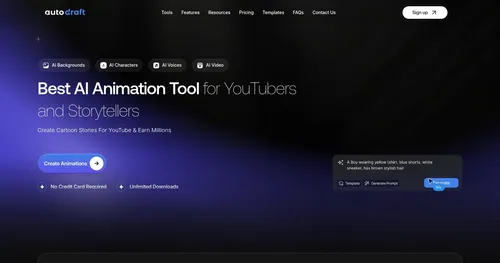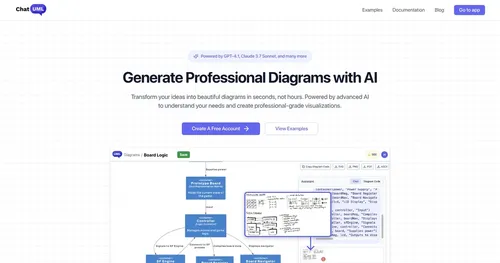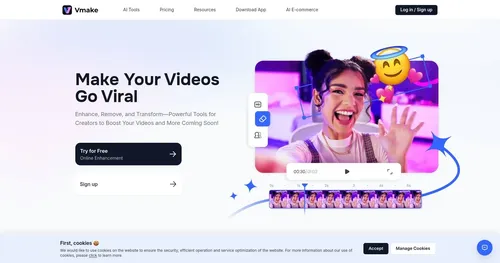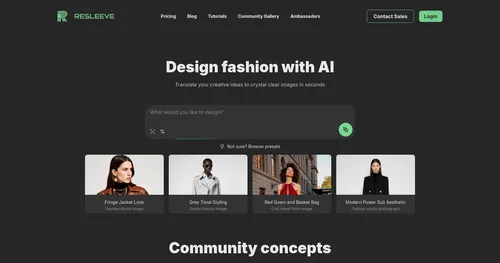fylm.ai

fylm.ai is a cloud-based AI color grading platform for creating LUTs and editing images with tools like NeuralToneAI and NeuralFilmAI.
The platform processes raw files from DSLRs, mirrorless cameras, and smartphones using ACEScct color management for consistent workflows. NeuralToneAI applies AI models to generate grades, match shots, and auto-correct colors based on image context. NeuralFilmAI delivers neural-network film emulations, exporting as LUTs, XMP profiles, or Capture One styles. Subtractive CMY model simulates film emulsion processing, increasing saturation in darker tones via a density slider.
Primary controls include wheels and bars with GPU acceleration for instant adjustments. Curves support 4096-point precision in 32-bit processing to maintain highlight and shadow detail. Secondaries offer hue, saturation, and luminance controls per color range, plus luminance vs. saturation and saturation vs. saturation qualifiers. Scopes display RGB parades, waveforms, vectorscopes, and histograms. Blending modes such as overlay, soft light, and darken enable effects like bleach bypass.
Asset management centralizes files with instant search and filtering. Collaboration supports private team access, comments, and simultaneous edits. Magic Mode provides a step-by-step LUT builder completing in 18 seconds. Version 2.2 adds tetrahedral interpolation for smoother AI interpolations.
Competitors include color.io for web-based grading with basic AI matching, and Colourlab.ai for automated shot balancing in ACES space. fylm.ai offers broader browser collaboration and film-specific AI, with plans from free evaluation to team tiers adding users and storage, positioned as more affordable for remote workflows than desktop alternatives.
Users report up to 10x faster on-set LUT creation and 90% time savings on show setups. Limitations involve internet dependency and free tier caps at 1GB storage and 2048px exports. AI handles 85% of primaries effectively but requires manual refinement for creative specifics.
Test NeuralToneAI on a single frame to evaluate matching accuracy before scaling to projects.
Video Overview ▶️
What are the key features? ⭐
- NeuralToneAI: Applies AI colorist models to generate grades, match shots, and auto-correct based on cinematic training data.
- NeuralFilmAI: Delivers context-aware film emulations mimicking real stock for instant cinematic elevation.
- Subtractive CMY Model: Emulates film emulsion by increasing saturation in darker tones for organic depth.
- Magic Mode: Guides step-by-step LUT creation in under 20 seconds with skip options for quick workflows.
- Collaboration Tools: Enables private team sharing, comments, and simultaneous edits on projects.
Who is it for? 🤔
Examples of what you can use it for 💭
- Cinematographer: Uses NeuralToneAI to match shots from a multi-camera setup, ensuring consistent looks across takes for quick on-set approvals.
- Photographer: Applies NeuralFilmAI emulations to raw portraits, exporting XMP profiles to Lightroom for batch editing with film-like tones.
- Video Editor: Employs Magic Mode to build a show LUT in seconds, sharing the project privately with directors for feedback before final DI.
- Marketing Team: Leverages collaboration tools to grade campaign stills remotely, filtering assets and adding comments for client revisions.
- Indie Filmmaker: Runs AI Color Extract on reference images to pull grades, applying them via curves for budget-friendly post-production.
Pros & Cons ⚖️
- AI speeds workflows
- Cloud collab ease
- Film emulation smarts
- Free tier limits
- AI needs tweaks
FAQs 💬
Related tools ↙️
-
 Autodraft
An AI-powered platform that can transform text prompts into vivid visuals
Autodraft
An AI-powered platform that can transform text prompts into vivid visuals
-
 Collov AI
Interior design AI generator that makes realistic renderings of your room
Collov AI
Interior design AI generator that makes realistic renderings of your room
-
 ChatUML
An AI tool that lets you transform your idea to diagrams in no time
ChatUML
An AI tool that lets you transform your idea to diagrams in no time
-
 mnml.ai
An AI design assistant for architects and interior designers for creating high-quality renders
mnml.ai
An AI design assistant for architects and interior designers for creating high-quality renders
-
 Vmake AI
An AI-powered platform designed to enhance the online retail experience
Vmake AI
An AI-powered platform designed to enhance the online retail experience
-
 Resleeve
An AI-driven fashion design tool that transforms fashion sketches into realistic photos
Resleeve
An AI-driven fashion design tool that transforms fashion sketches into realistic photos

